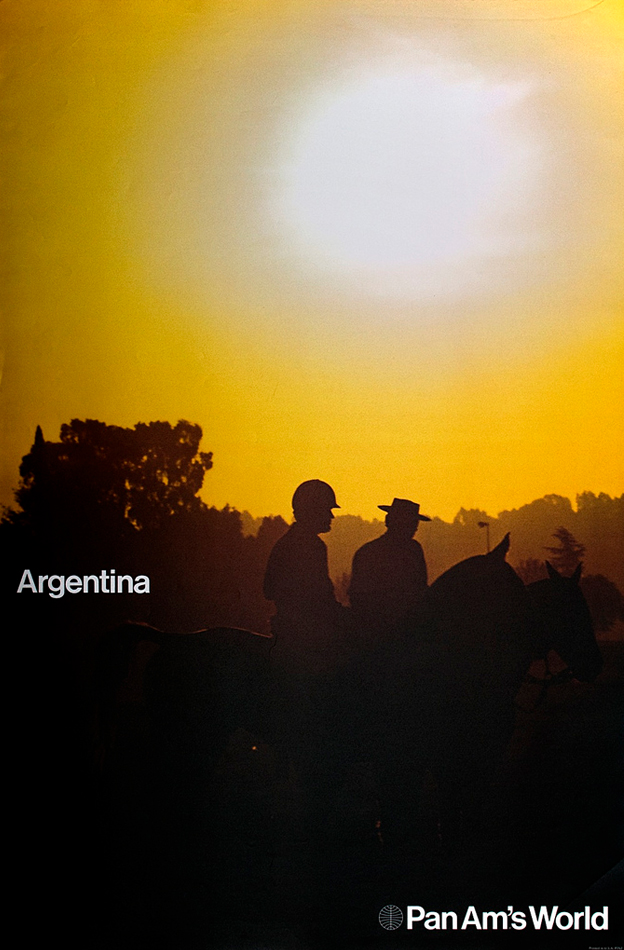
Chermayeff & Geismar (1971): Poster from “PanAm’s World” Campaign.
When I was an undergraduate student, a relative gave me this big coffee table book about airline visual identities. It documents the visual output of the 20th century aviation industry in all its glory: Full-bleed Kodachrome photography overlaid with tightly-set Helvetica at PanAm. Colourful, bold illustrations and lettering, printed in stone lithography well into the 1950s at Air France. The cool functionalism of HfG Ulm at Lufthansa.
I love looking at these images. But as I do so now, at a time when the climate crisis has (rightfully) become the subject of almost daily news coverage, I’m also acutely aware of the ruinous impact commercial aviation has on the world. It contributes around 2.5% to global CO2 emissions, a figure which is rising sharply, not to mention countless ways aircraft noise and pollution causes misery around the world, and the damage caused by its various supply chains.
Most of the material in the book was published around the middle of the century, when the science around global heating was already well-understood, and we still had the chance to avert most of the damage — a chance which we squandered.
Against this background, doing any design work for the aviation industry (like those beautiful posters reproduced in the book) seems morally impossible to me. This was a painful realisation: Throughout my education, designing an airline was always one of those crowning achievements waiting at the end of a successful career. That aspiration is gone.
But the trouble doesn’t end there: Since I’ve had that realization a few months back, the list of industries that seem at least questionable to work for in light of the climate emergency has been getting longer and longer. First, I added fossil fuel corporations, car manufacturers, shipping companies and the like. Then it became clear that the tech industry doesn’t have a great record either: The Co2 emissions of the world’s data centres already rival those of the aviation industry, and are likewise rising. And, of course, Google is directly funding climate-denying thinktanks, apparently to save taxes. What about cultural institutions who are increasingly relying on these industries for funding? Universities who refuse to divest?
This is where I’m beginning to think that something bigger has been lost here. It’s not just that I can’t imagine doing design work for an airline; I can’t imagine designing anything as optimistic, openly in favour of consumption, excited about technological progress as the PanAm poster for anyone. Graphic design was never innocent in the destruction of the planet, but over the past few months I’ve felt more viscerally guilty than ever before.
The usual response to concerns about the environmental damage cause by graphic design are technological fixes: Printing with soy-based inks on recycled paper, using lighter typefaces to save on ink, or moving from print to digital: Please consider the environment before printing this email1.
These ideas are no doubt well-intentioned, but ultimately they're incremental improvements to a deeply broken system — equivalent to replacing petrol cars with electric ones, or plastic straws with cornstarch. At best, what these proposals achieve is shift which natural recources we’re going to waste on consumerism.
The only way I can see to make graphic design truly sustainable is to make significantly less of it. Smaller print runs, less packaging, fewer, lighter websites, less advertising, less stuff

Some visual communication in the Pacific
It's depressing and scary to be a young worker coming into an industry that, like many other industries, needs to shrink or otherwise transform itself radically to limit the damage it causes to our planet.
The reason it’s so scary is that my entire understanding of economics, of how you're supposed to become successful in the world, taught to me by my parents and teachers, comes from the same era as those PanAm posters: Success equals growth, bigger equals better, technology will save the day.
Success in graphic design is measured following the same logic: Whoever gets to work with the largest print budgets, the biggest brands, whoever gets the most views, whoever shows their work in the most countries is the most succesful.
But with every news story about a wild fire, heatwave, storm, or flood, that model looks more untenable. Smarter people than me are working on alternative models for design, and cultural production in general. In Duty Free Art2, Hito Steyerl writes:
The contrary [to current ways of doing design] is a process that doesn’t grow via destruction, but very literally de-grows constructively. This type of construction is not creating inflation, but devolution. Not centralized competition but cooperative autonomy. Not fragmenting time and dividing people, but reducing expansion, inflation, consumption, dept, disruption, occupation, and death.
Intellectually, I know that what she and others are proposing is true, necessary, and probably without alternative. But emotionally, I’m not ready to feel hopeful about that new form of design practice: I’m not done grieving the end of the old one.3
I’m not aware of any similar ideas for screen-based design, maybe because we tend to assume it’s cleaner by default? It isn’t: See datacenter emissions. ↩︎
Hito Steyerl (2019): Duty Free Art: Art in the Age of Planetary Civil War, p. 18. Verso Books ↩︎
This essay was first published on Content Free. ↩︎